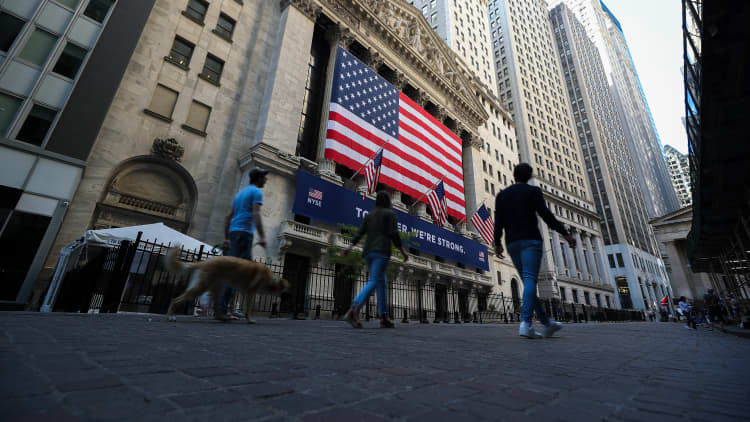Main Street still has a lot of catching up to do with Wall Street.
While the U.S. economy is showing signs of life as businesses reopen and job growth rebounds, the gap between the real economy and the stock market remains unusually wide.
"The words recession and recovery can't begin to capture the magnitude of pain trigger(ed) by this crisis and the risks that widespread suffering will persist if we can't blunt the headwinds still ahead," wrote Grant Thornton chief economist Diane Swonk.
U.S. markets surged on Friday as nonfarm payrolls rose by 2.5 million in May, much higher than economists had expected. The S&P 500 is now close to flat for the year, despite being down as much as 30% a few months ago as business activity froze during the coronavirus pandemic.
Meanwhile, the unemployment rate at 13.3% remains near its highest level in the post-World War II era.
"Even with the mild improvement in May, the unemployment rate of all groups is still higher than the highest level the overall unemployment rate hit at the height of the Great Recession, when it reached 10.0% in 2009," said Elise Gold, senior economist at the Economic Policy Institute.
The economic crisis caused by the pandemic has hurt America's workforce disproportionately. The unemployment rate among black workers, for example, increased by 0.1% in May to 16.8%, while unemployment among white workers decreased and sits at 12.4%.
"Research has shown that historically higher unemployment rates, lower wages, higher poverty rates, and lower liquid savings make job losses even more devastating for African American workers and their families," Gold said.
The divide between Wall Street and Main Street is also apparent in data about stock ownership. A March 2020 analysis by Pew Research found only 14% of American families are directly invested in individual stocks, while 52% have some level of ownership thanks to retirement accounts such as 401(k)s. Only 31% of black families and 28% of Hispanic families are invested, compared with 61% of white families.
The figures highlight how many Americans have missed out altogether on the recent surge in stock prices.
"There's a lot of people that got out of this market and are staying out, making the assumption that we either have to test that low again or things are actually going to get worse, not better," said Art Hogan, chief market strategist at National Securities.




